The best stereo speakers 2025: top speaker systems for all budgets, tested by our experts
Need the best stereo speakers? Whether passive, powered or active, we've got you covered
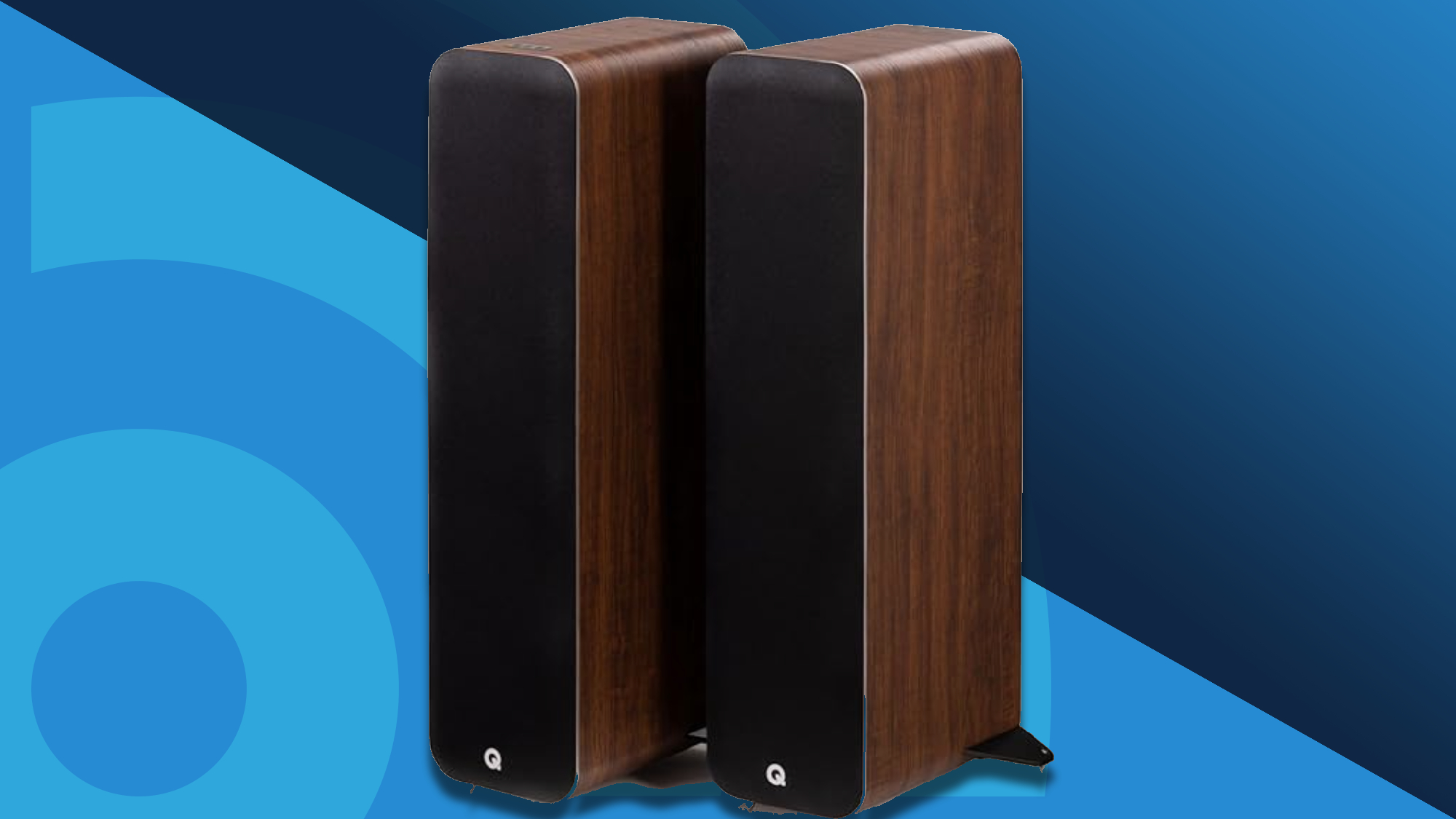
The best stereo speakers deliver a complete home audio experience, combining the spacious sound of traditional passive setups with the convenience of modern (often wireless) technology. Every model in this guide has been rigorously tested by our expert audio team, who bring decades of combined experience reviewing hi-fi gear from top audio brands, like Dali, KEF, JBL, and Q Acoustics, to bring you only the very best recommendations.
Classic hi-fi systems – with separate components like amplifiers, NAS drives, or turntables – will still appeal to audio purists. But today’s best stereo speakers offer far more flexibility. Many double as all-in-one multimedia speakers, and even casual listeners will notice just how immersive, detailed, and lifelike great stereo sound can be.
We love the best wireless speakers, but most come in a single unit. True stereo setups, with two independent speakers, create a much richer and more dynamic soundstage. If you’ve got the space – especially for floorstanding models – you’ll enjoy a more natural, textured, and responsive sound. And when you crank up the volume, these speakers don’t just keep up, they shine.
In this guide, you’ll find our expert team’s top picks across the board. From compact bookshelf speakers (some of which also appear in our best computer speakers roundup) to powerful floorstanders with built-in subwoofers designed to fill your room with sound.
The Quick List
Get straight to it with our easy-to-browse list of the best stereo speakers for every setup and budget. Click through to jump straight to the full write-up of each model.
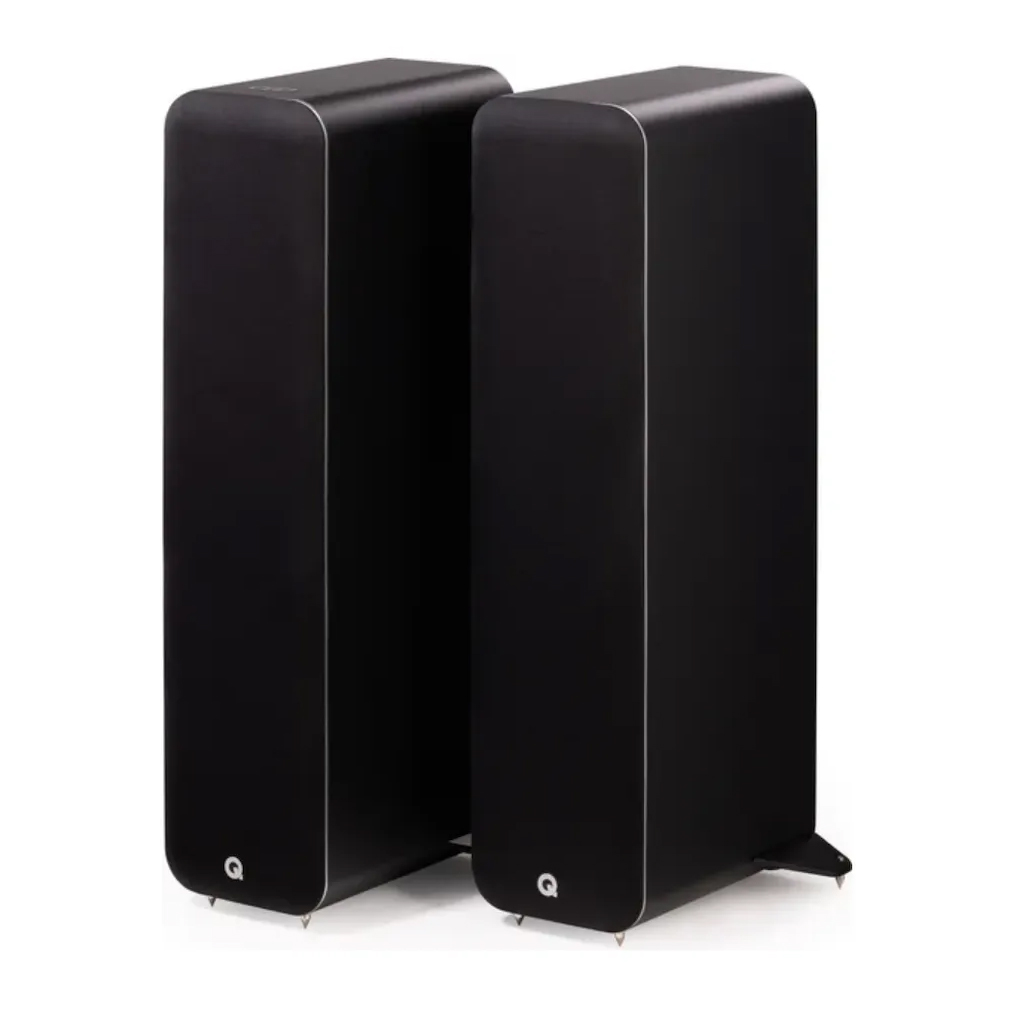
Best stereo speakers overall
An all-in-one music system that delivers big, bold sound in a sleek, floorstanding design. With powerful performance, versatile connectivity, and a compact footprint, it’s easily our top pick.
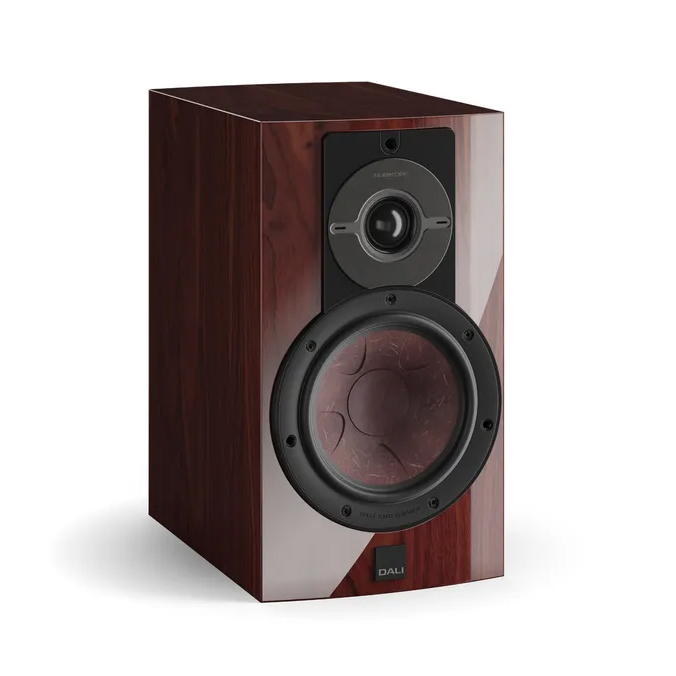
Best compact stereo speakers
Compact and confident, they deliver powerful, detailed sound and look as premium as they perform. Ideal for shelves or stands, they bring Dali tech to a more affordable price point.
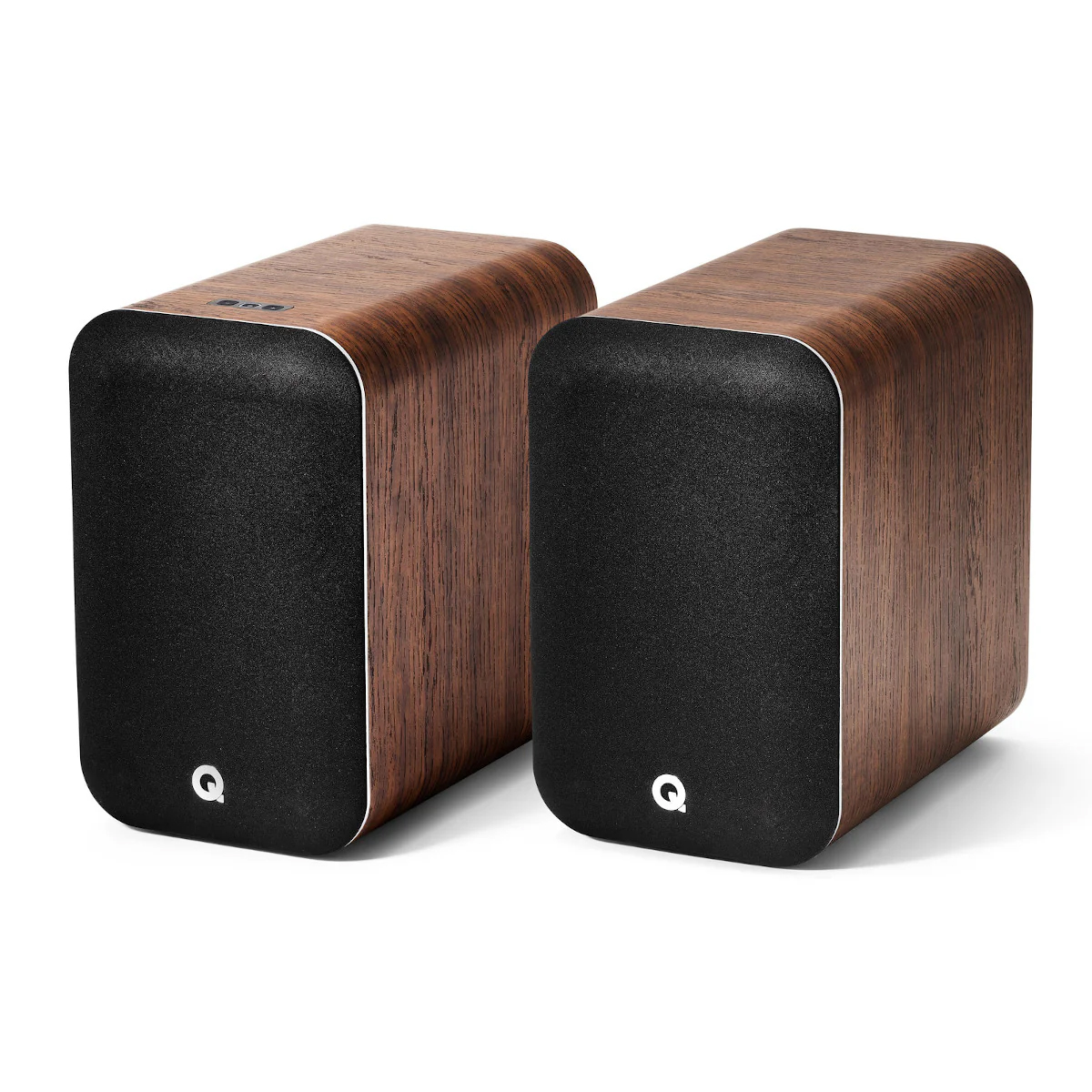
Best budget stereo speakers
Our top affordable choice, especially if you want better TV sound but not a soundbar. These powered bookshelf speakers offer great clarity and warmth, plus Bluetooth streaming for ease.
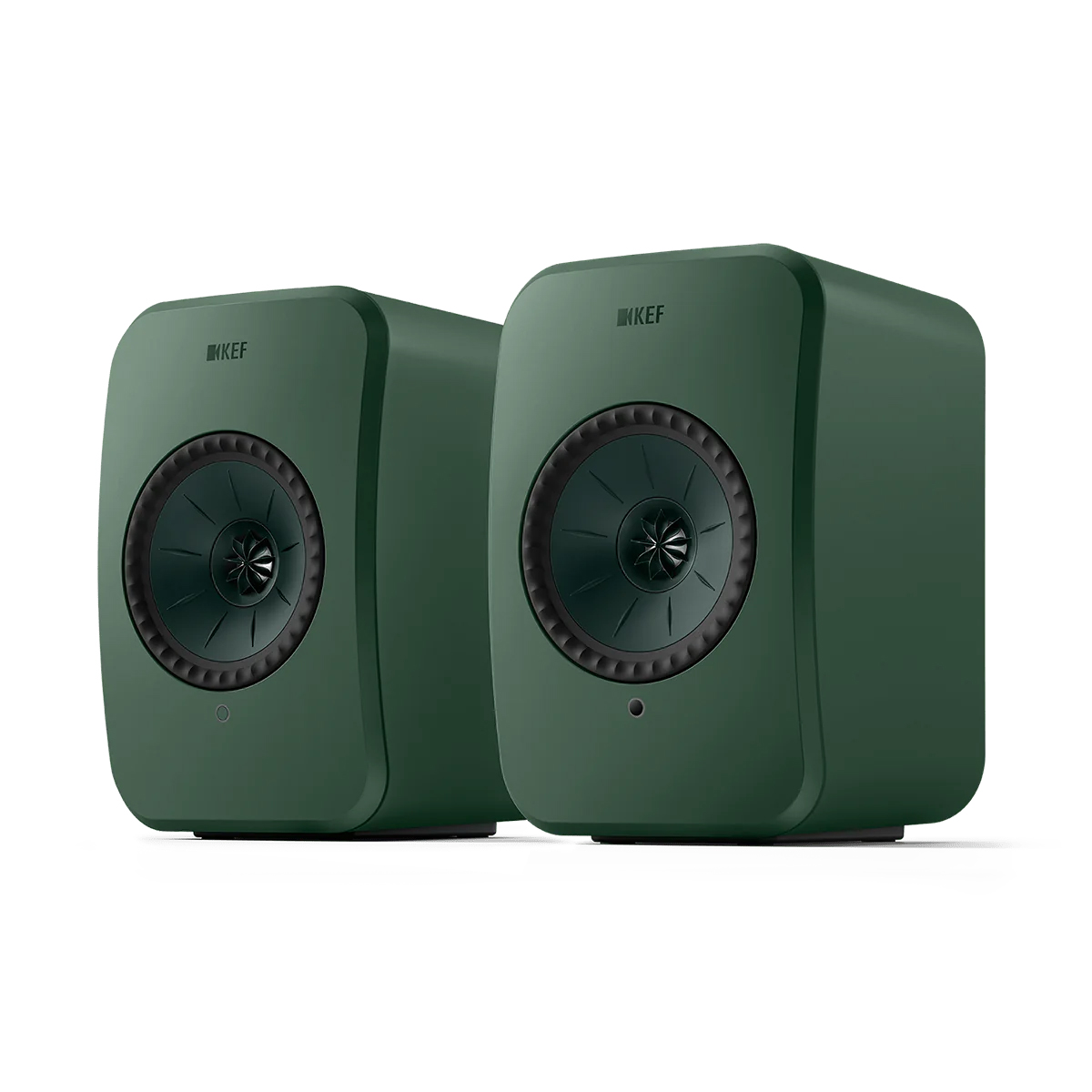
Best premium wireless stereo speakers
Expect a stunning design, rich hi-res audio, and good connectivity. While they're compact and stylish, their powerful sound and built-in streaming tech justify the price for serious stereo lovers.

Best super-compact stereo speakers
Small but mighty, these beautifully built speakers sound far bigger than they look. With Bluetooth, optical input, and excellent clarity, they're ideal for desks or small spaces with impressive musicality.

Best bookcase stereo speakers
Stylish and detailed, these passive bookcase speakers look more expensive than they are. They deliver balanced, engaging sound – perfect for music lovers wanting a compact setup that packs a punch.
Load the next products...
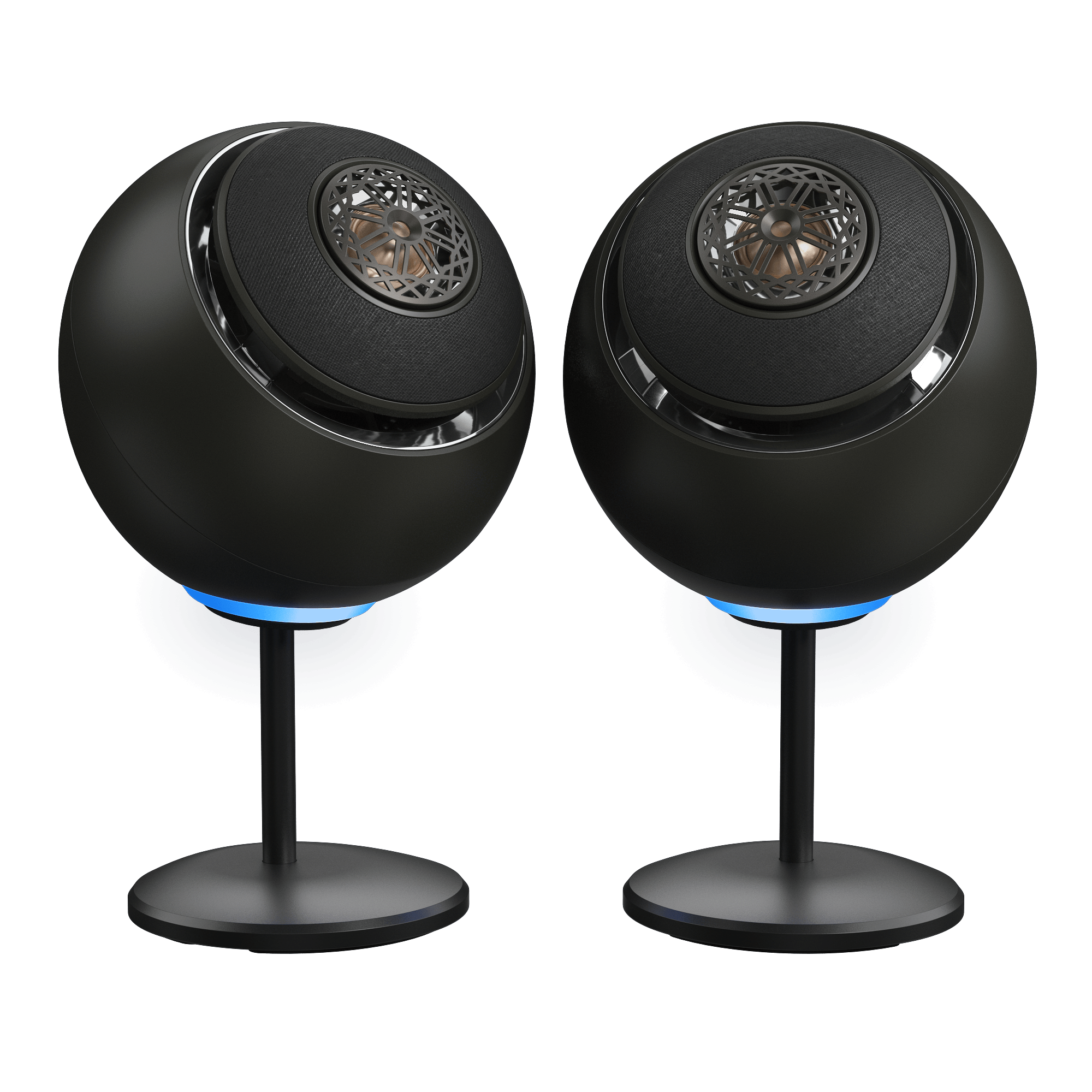
Best desktop stereo speakers
Quirky, compact, and packed with surprisingly punchy sound, these desktop speakers are a top choice for laptop setups. Their design and impressive bass make them fun and powerful for work and play.
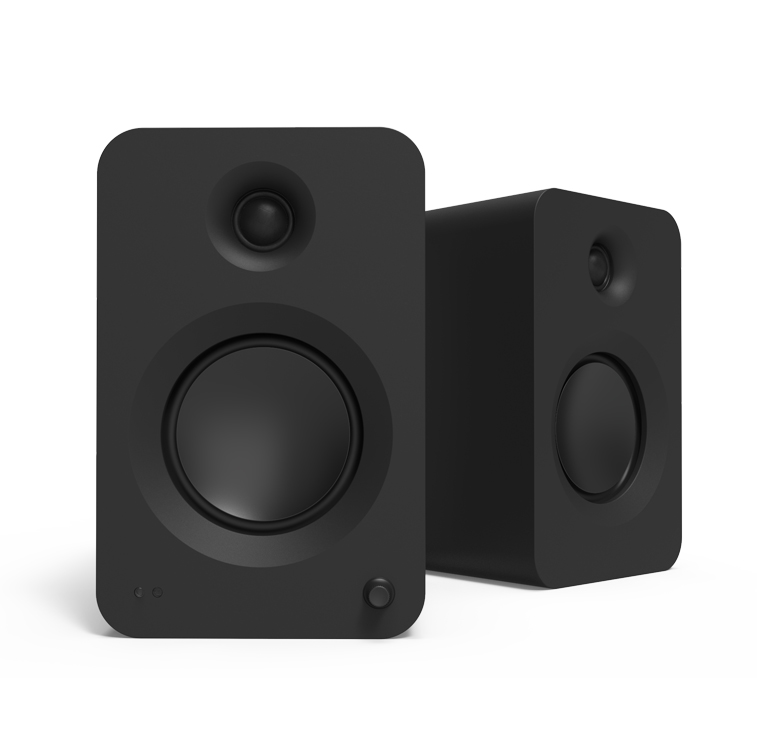
Best powered stereo speakers
A stylish, powered stereo pair that blends good looks with room-filling sound. With HDMI ARC, Bluetooth 5.3, and loads of ports, they're a top pick for big audio without the hassle of a full system.
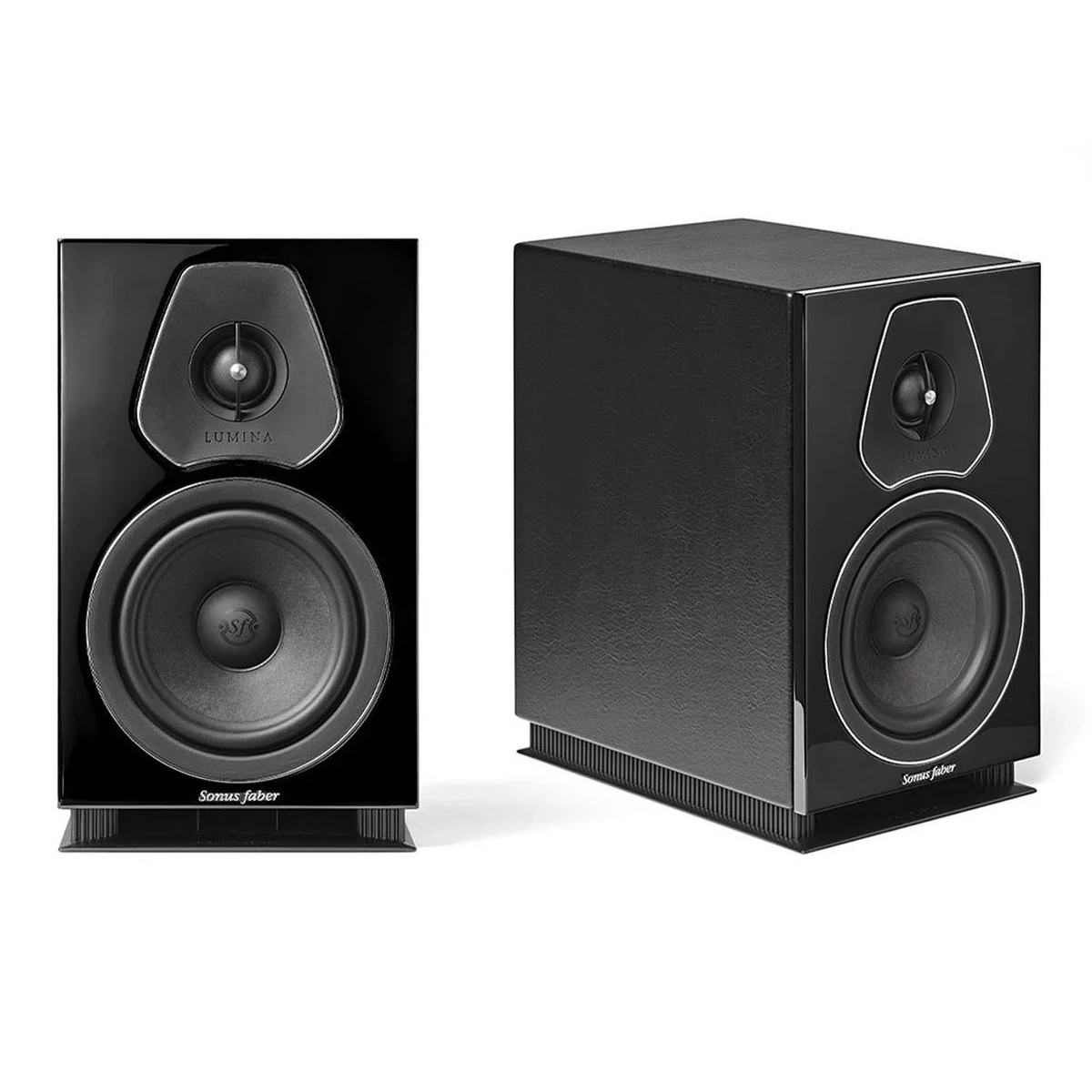
Best stereo speakers for design
Design-led and beautifully built, these Italian-made passive speakers sound as refined as they look. With detailed highs and a natural midrange, they're ideal if you want premium stereo sound.

Best floorstander stereo speakers
Stylish floorstanders with bold sound and a small footprint. With wireless support, HDMI ARC, and a vibrant soundstage, they're a great choice for immersive stereo audio without a complex setup.

I've reviewed over 150 audio products since becoming a tech journalist, ranging from super-budget earbuds to high-end Hi-Res Audio music players. Before joining TechRadar, I spent three years at What Hi-Fi? testing everything the world of audio had to offer; before that, I was a professional dancer. My love of music ties it all together.
Recent updates
March 28, 2025
Refreshed the introduction to add more details about our testing process and expertise. Switched the Sonus Faber Lumina I for the Sonus Faber Lumina II in as our 'best for a stylish home' pick. Removed the Apple HomePod mini. Added the Creative Pebble Nova as our 'best desktop' option. Added the lovely Audioengine A2+ to our 'also consider' section.
The best stereo speakers 2025
Why you can trust TechRadar
The best stereo speakers overall
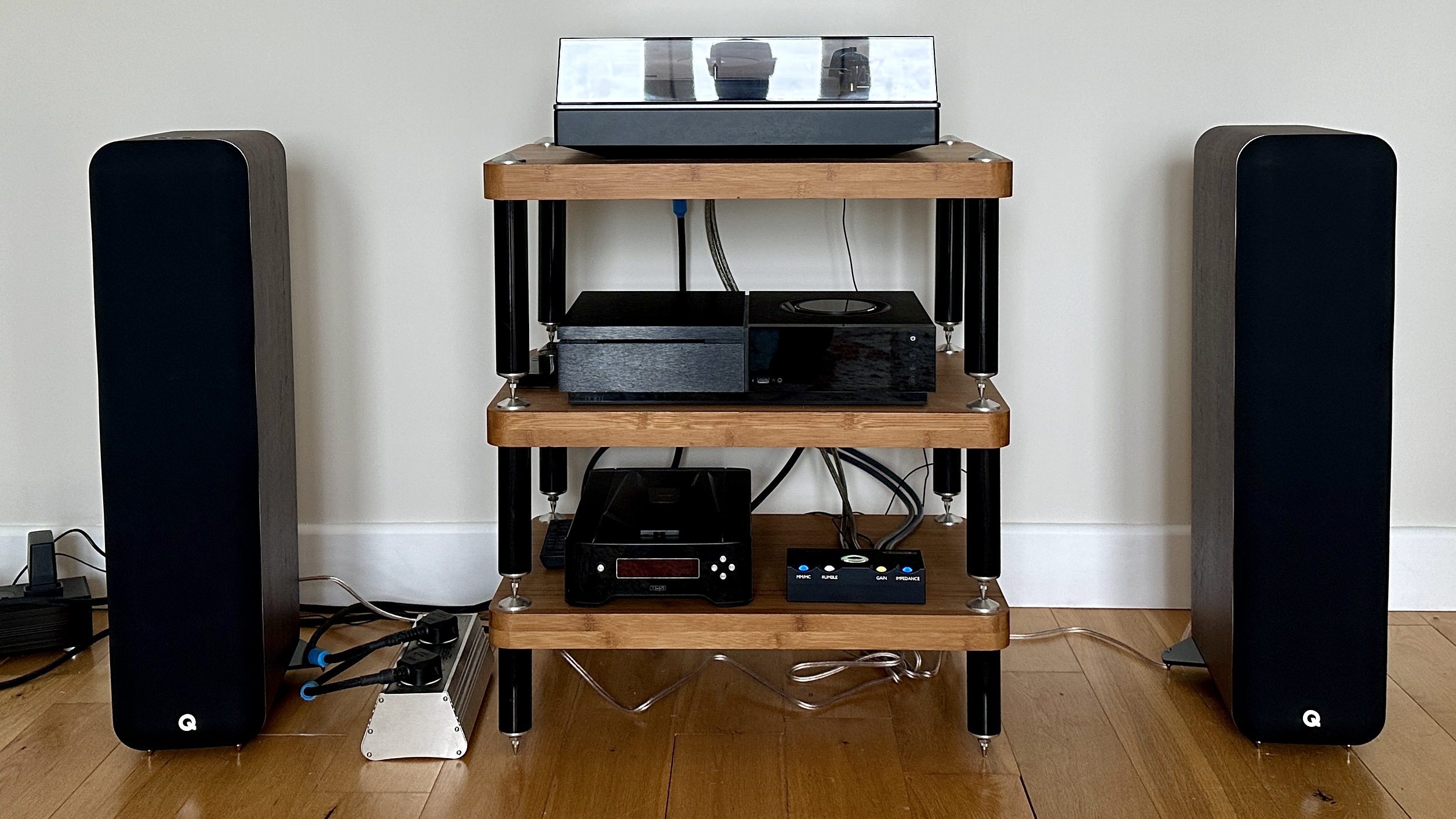
Specifications
Reasons to buy
Reasons to avoid
To many an avid music fan, the Q Acoustics M40 HD's arrival will be akin to finding the holy grail: floorstanding speakers that neither take up much space (they're gloriously svelte) nor require separate amplifiers cluttering up your den. Built on the success of the excellent M20 HD (listed below, at no. 3 in this buying guide), the M40 HD take things all the way to the floor – and do an exceptional job at relaying your music, however you choose to listen.
These are powered speakers (there's a 'master', with amplification for both towers squirrelled inside it plus controls on the top plate, and a 'slave' speaker) that offer both wired and wireless connectivity options as well as hi-res audio capability through both the digital optical and USB-B inputs. 200 watts of power is more than enough for most households and you're also getting Q Acoustics' revered Continuous Curved Cone (C3) driver, plus aptX HD and aptX Adaptive over Bluetooth.
OK, some users will be disappointed to see the lack of wi-fi action or a control app, but there’s more than enough to be excited about for this money – and as far as the sound quality is concerned, they're a zealous and articulate listen, provided you give them a bit of room to operate and don’t position them too close to a rear wall.
Read our full Q Acoustics M40 HD review
The best compact stereo speakers
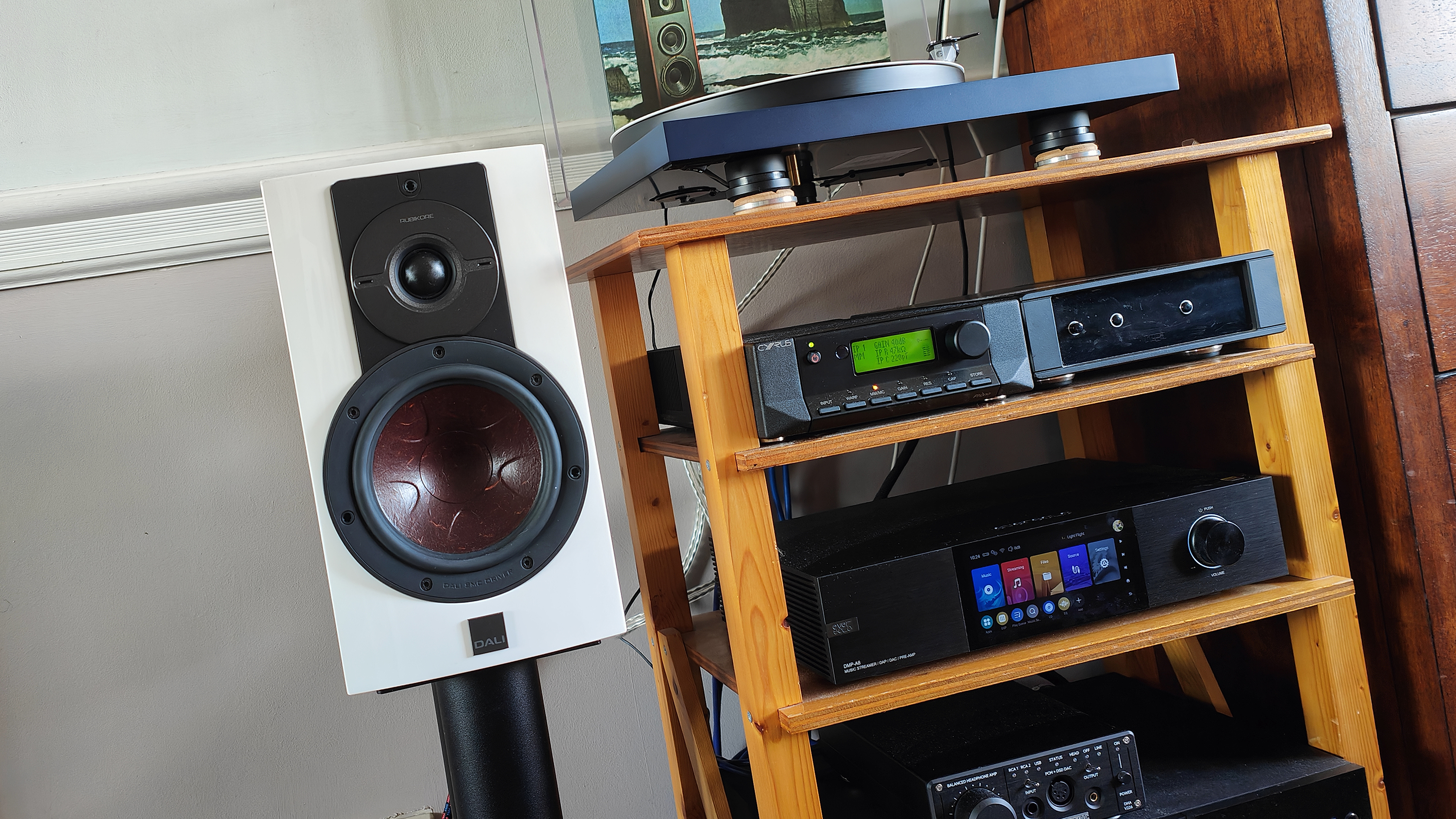
Specifications
Reasons to buy
Reasons to avoid
The Dali Rubikore 2 are compact stand, shelf or furniture-mount loudspeakers. They show Dali’s commitment to making high-end audio technology more accessible. Incorporating advancements from Dali's eye-wateringly expensive Kore series, they aim to deliver premium sound quality at a more accessible price point.
These speakers are packed with features, including a 6.5-inch mid-bass driver utilizing Dali's Clarity Cone technology. A soft dome tweeter ensures precise high-frequency reproduction, while a rear-firing bass port with a continuous flare design contributes to deeper bass.
The Rubikore 2 has a sleek design with gently curved front and rear panels, available in four different finishes. Measuring 350 x 195 x 335 mm and weighing 10.5 kg each, the cabinets are braced, providing a solid and refined look and build.
In terms of sound, the Dali Rubikore 2 delivered impressive bass extension and tonal accuracy during our testing, offering a balanced and engaging listen we described as “consistently good fun” in our review. At times, the soundstage did lack some depth compared to rivals. Overall, the Rubikore 2 provides excellent value for anyone looking for high-quality audio in a compact form, which is why we’d rate them as our top all-rounder pick for most people looking for a flexible speaker system.
Read our full Dali Rubikore 2 review
The best budget stereo speakers
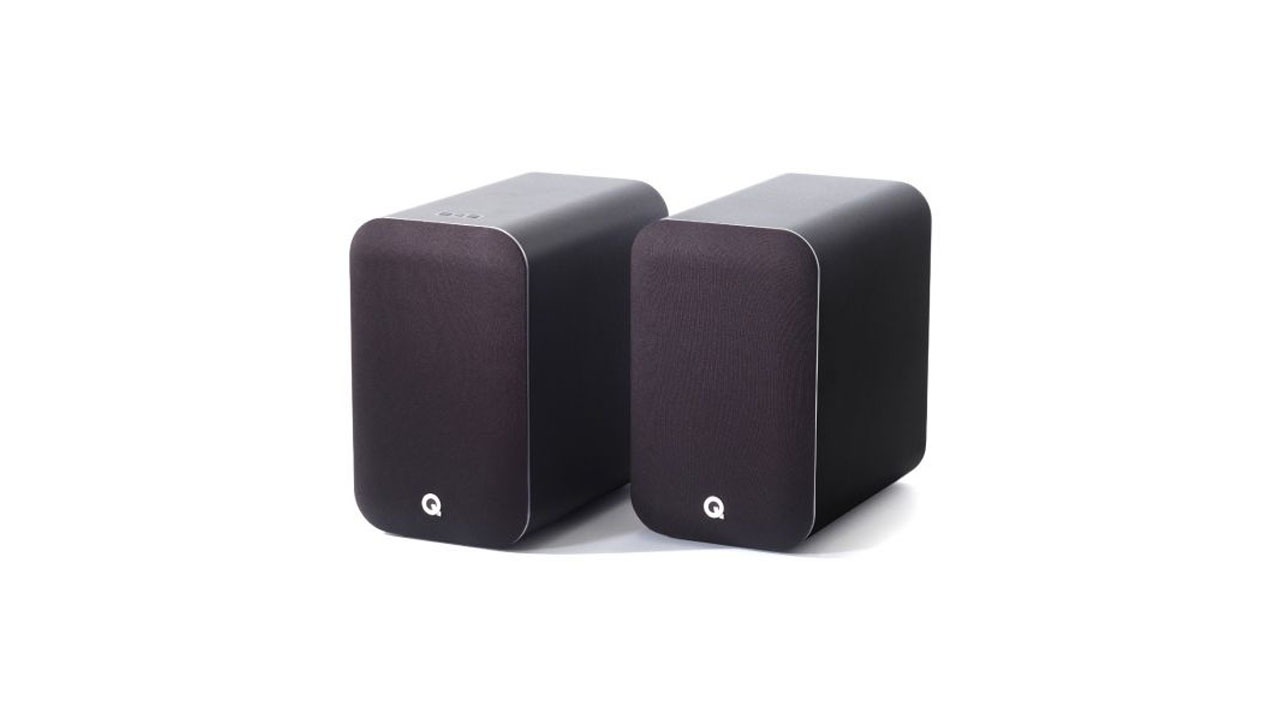
Specifications
Reasons to buy
Reasons to avoid
The Q Acoustics M20 HD speakers from Q Acoustics are a good value option and also a solid choice if you’re looking to upgrade the audio on your TV but don’t want a soundbar. It’s certainly more versatile. They’re a pair of powered bookshelf speakers — one with a digital amplifier built-in — and they make for an easy-to-use and impressive-sounding audio solution for a living room, games room, bedroom or even a home office.
One drawback here is they’re not ‘wireless’ in the sense you may imagine. You do get Bluetooth streaming, but the M20 HD system involves significant cabling. In the box is a mains cable for the active speaker and a four-meter speaker cable for linking up the active and the passive speakers via binding posts on the reverse of each. The active speaker essentially powers the passive speaker.
However, this sound system is a fantastic all-rounder. As we wrote in our review, "the M20 HD is great at what it does." We also said: "If you’re as much into music as you are TV, the system’s warm digital sound, treble detail and balanced sound delivers an ideal all-round soundstage that’s as adept with Nirvana as it is with Netflix."
Read our full Q Acoustics M20 HD review
The best premium wireless stereo speakers
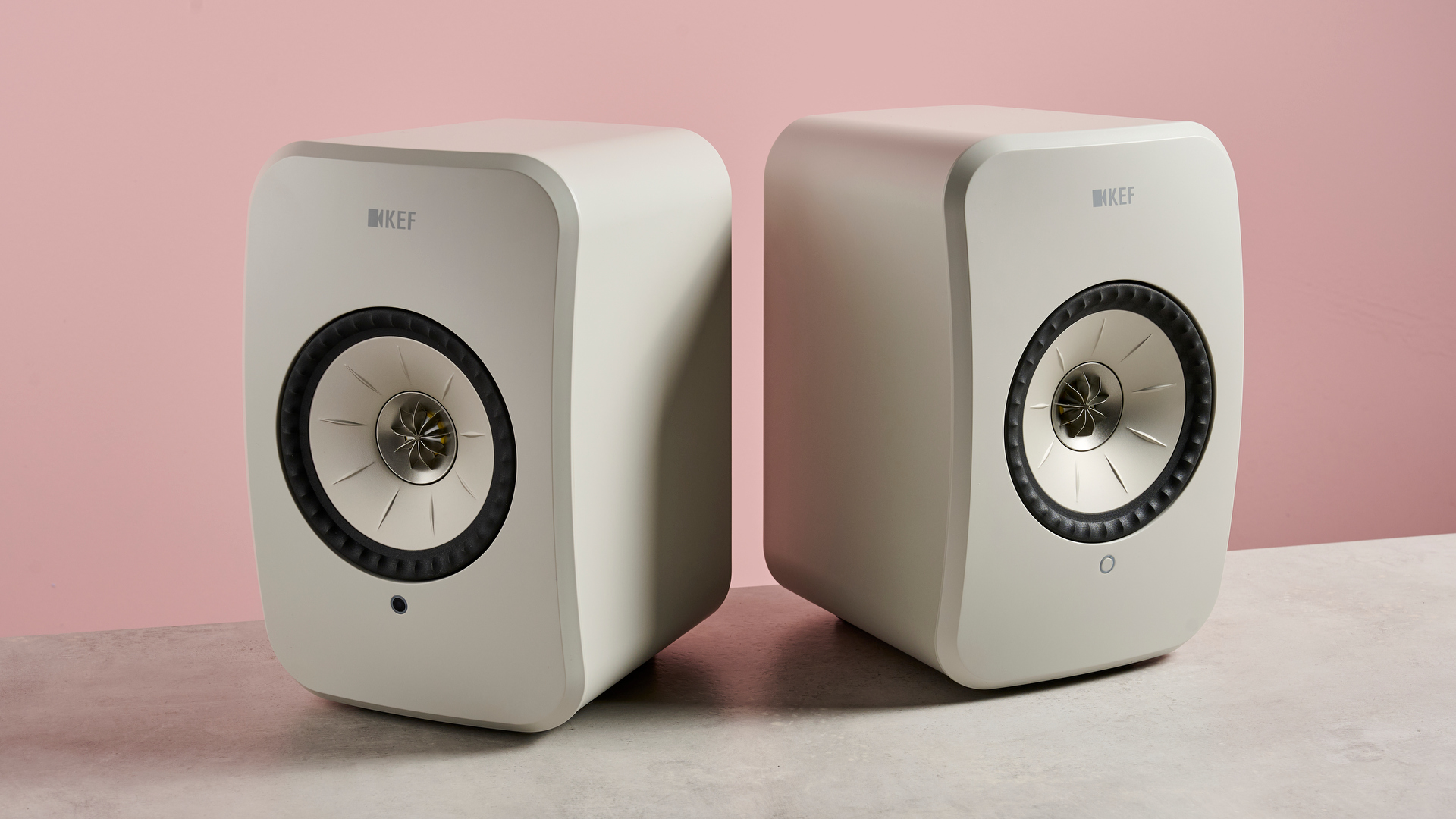
Specifications
Reasons to buy
Reasons to avoid
Looking for an excellent pair of stereo speakers that we awarded a rare 5 out of 5 stars during our recent testing? Meet the latest speakers from KEF, the KEF LSX II LT. The brand has long been at the top of its game for packing what is essentially an entire hi-fi system into a pair of speakers and it's done it again with added style.
The KEF LSX II LT consists of a top streaming sound system within two very compact and very nice-looking loudspeakers. They're beautifully-designed and capable of excellent high-res digital audio from any hi-res source you feed them, which includes your TV.
One of their appeals for homes on the smaller side is they're quite compact. Which means they're not going to fill larger rooms with sound, but that's not what they're designed for. What's more, you won't find analog inputs here, which some people might miss – although the KEF LSX II do have them. And they're not a good pick for vinyl – the Kanto Ren in this guide are a good alternative for that.
If these smaller issues don't concern you, there's very little to complain about here. The KEF LSX II LT are some of the best wireless stereo speakers we've tested and you won't be disappointed.
Read our full KEF LSX II LT review
The best super-compact stereo speakers
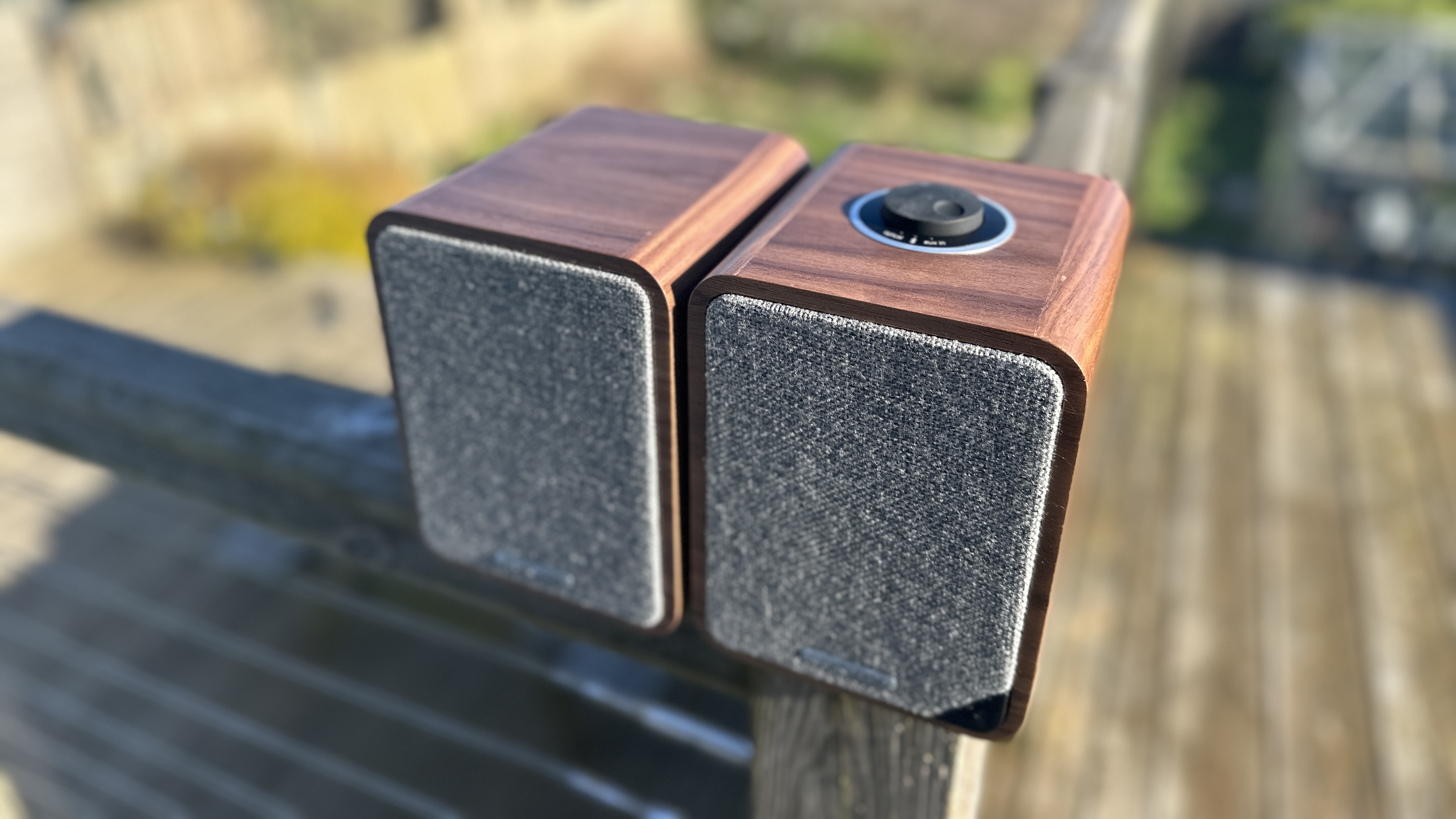
Specifications
Reasons to buy
Reasons to avoid
If we’re cutting to the chase here (and that is what this guide is for) then we’ll just go ahead and say the Ruark MR1 MkII is basically all gain, no pain. It’s small enough to sit happily on any remotely tidy desk, it’s built and finished to a standard that belies its fairly modest asking price (so pride of ownership is more-or-less guaranteed) and it sounds very accomplished indeed.
You've got aptX Bluetooth support here and don’t let the Ruark’s bijou size fool you – the MR1 MkII is all business. It sounds fuller, more open and more convincing than seems remotely likely. Given a fighting chance with some digital audio over Bluetooth or optical, the Ruark creates an open, quite spacious soundstage, with plenty of detail handed over and a very agreeable sense of clarity to its overall presentation.
'Musical’ might seem a redundant term when describing a pair of speakers when they’re playing music, but there are some alternatives that don’t sound anything like as musical as the MR1 MkII – it’s a revealing, confident and entertaining listen.
Read our full Ruark MR1 MkII review
The best bookcase stereo speakers
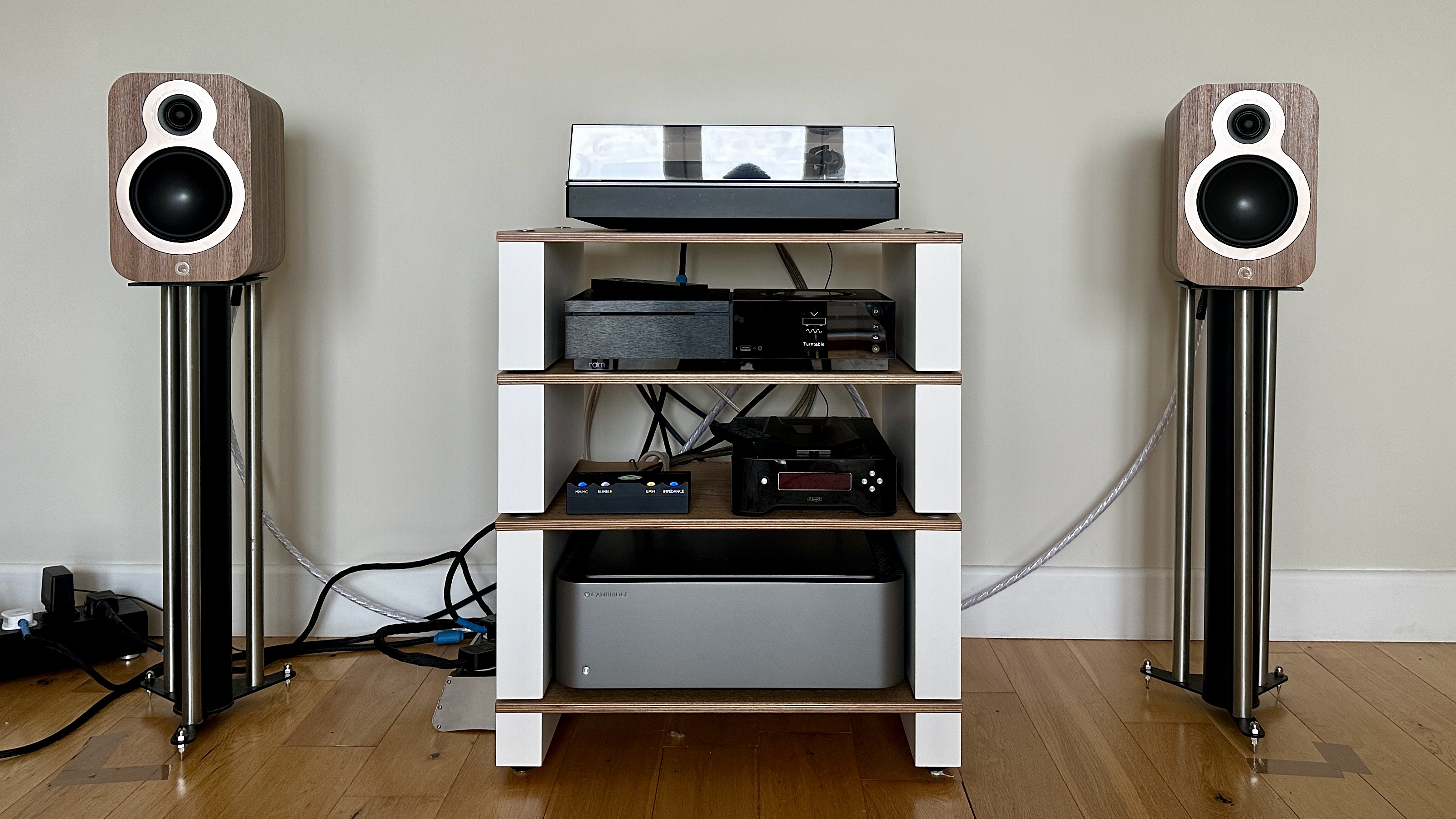
Specifications
Reasons to buy
Reasons to avoid
The Q Acoustics 3020c speakers are part of the company's 3000c series, aiming to deliver high-quality sound at an affordable price. Available in four finishes, they feature braced, elegantly curved cabinets that are slightly longer than tall, with satin nickel driver surrounds and magnetically attached grilles for an upscale appearance.
Each speaker houses a 22mm decoupled soft dome tweeter and a 120mm mid/bass driver utilizing Q Acoustics' 'continuous curved cone' design, first seen in the brand’s higher-end models. A rear-facing bass reflex port enhances low-frequency response, and the speakers offer a frequency range of 60Hz to 30kHz. The rear panel includes a single pair of low-profile cable binding posts.
Measuring 279 x 175 x 281mm and weighing 5.5kg each, the 3020c speakers are compact yet sturdy. Their unconventional dimensions contribute to a rather distinctive look compared to rivals, and the build quality reflects some thoughtful design principles we rated in our review.
In performance, the 3020c speakers delivered an assertive and detailed sound during our testing, with impressive stereo focus and soundstage capabilities. While they may lack some low-end punch and dynamic power compared to rivals, our expert team found they provided an engaging and insightful listening experience, making them a strong contender in this affordable price range.
Read our full Q Acoustics 3020c review
The best desktop stereo speakers
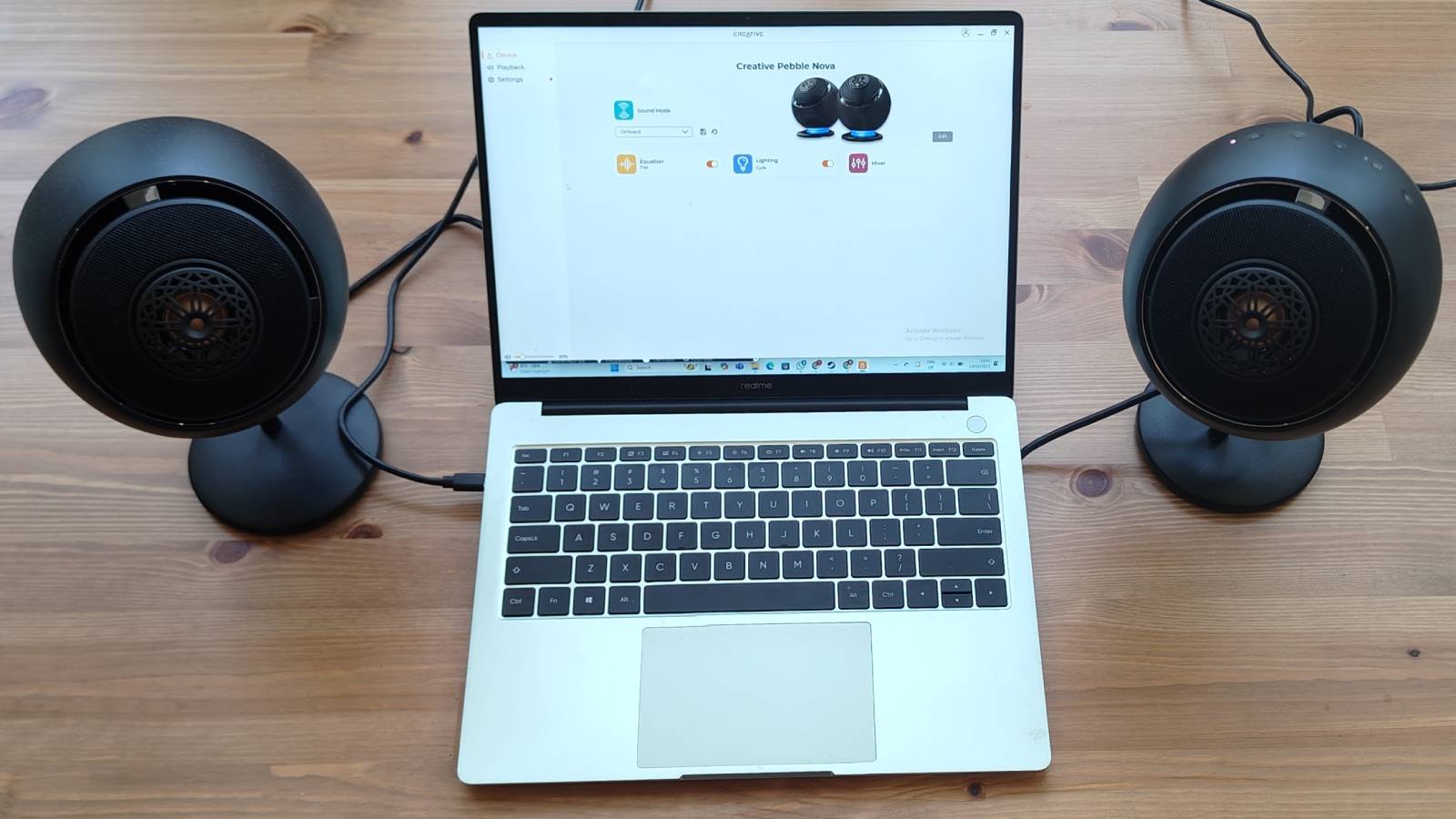
Specifications
Reasons to buy
Reasons to avoid
Stereo speakers don’t have to be floorstanding beasts to impress. If you’re after rich stereo sound for your desktop setup, we highly recommend the Creative Pebble Nova speakers.
With their distinctive spherical design – we likened them to Magic 8-Balls or lawn bowls in our full review – they definitely stand out. They're stylish in their own way, but more for fans of bold, quirky design than minimalist setups. So while they won’t suit every taste, they’ll absolutely appeal to those who love something a bit different.
Looks aside, the Pebble Novas deliver seriously impressive sound for their size. During testing, we were surprised by their defined bass, punchy max volume, and a range of customizable features that help them outshine many rivals in the desktop speaker space.
In short, these compact speakers will level up your computer or laptop audio with immersive, room-filling sound and coaxial drivers that add real clarity and depth. They're not the cheapest option, and they do take a little patience to set up. Plus, they’ll need a decent chunk of desk space. But if you’re willing to make that trade-off, you’re in for a treat.
Read our full Creative Pebble Nova review
The best powered stereo speakers
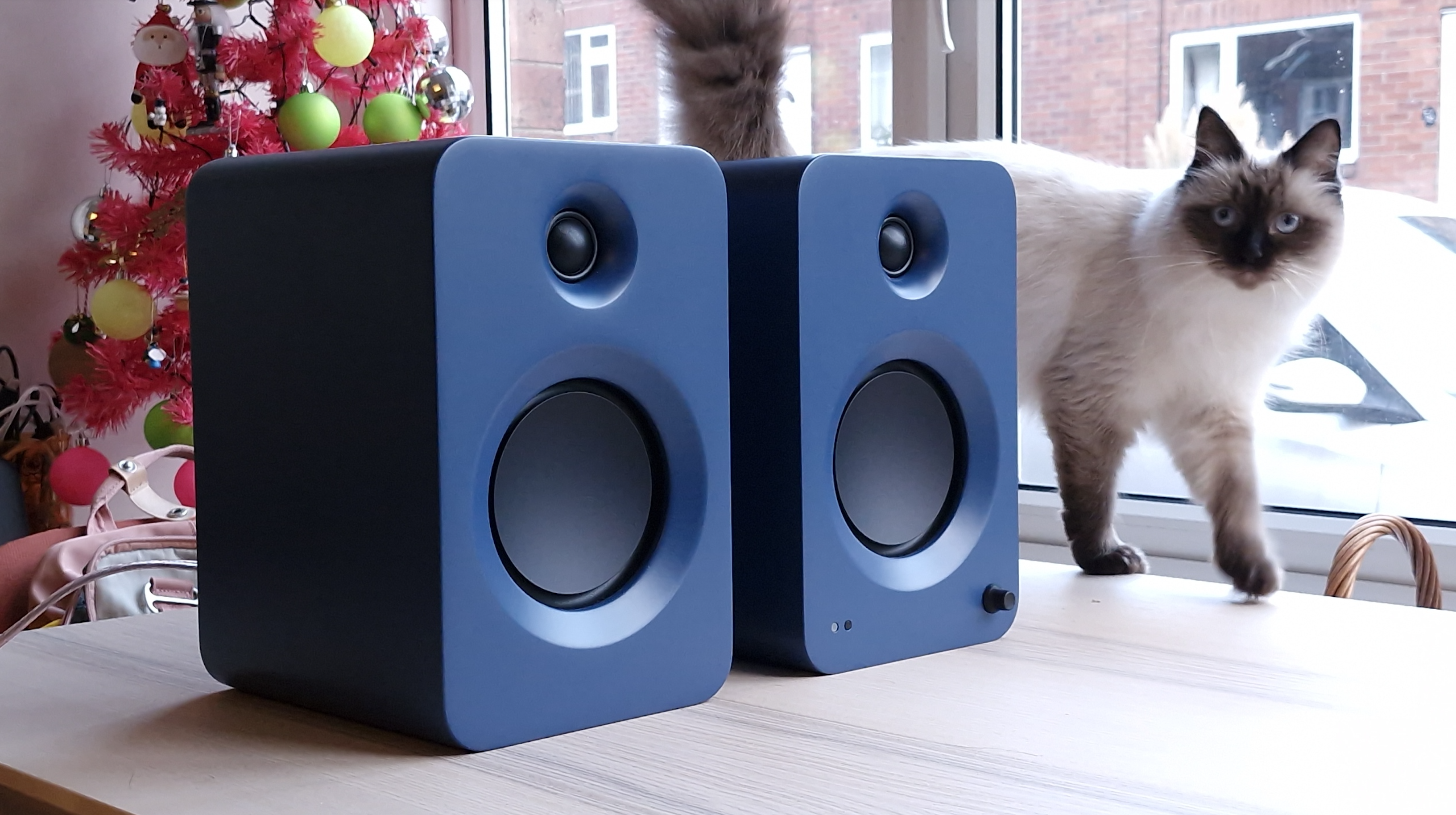
Specifications
Reasons to buy
Reasons to avoid
If you like your speakers to look tasteful and compact, as well as delivering on some seriously bold and powerful sound, then the Kanto Ren are well worth considering.
In our review, we called this a “does-everything bookshelf hi-fi system” because we think it’s incredibly versatile. For starters, these lovely-looking stereo speakers boast a refined and robust build, which we think will fit in seamlessly to all sorts of homes.
But it’s also the connectivity that impresses too, with HDMI ARC, optical, USB-C, RCA and 3.5mm aux inputs, and strong Bluetooth 5.3 connectivity besides. Some people might put a system like this together piece-by-piece, but if that doesn’t appeal, you’ve got pretty much everything you need here.
The Kanto Ren sounds brilliant, too. These speakers are rich in sound and although they’re low-profile compared to similarly-powered hi-fi and AV systems, as we wrote in our review, they “pack a punch with their 100W RMS of auditory juice”. This makes them a top choice for whatever you want to watch, movies, TV shows, video games – we think it’s safe to say they’d beat any TV soundbar in terms of power and performance.
If you want excellent hi-fi sound without the faff in a pair of speakers you’ll actually enjoy looking at as well as hearing, the Kanto Ren are a reliable pick.
Read our full Kanto Ren review
The best stereo speakers for design
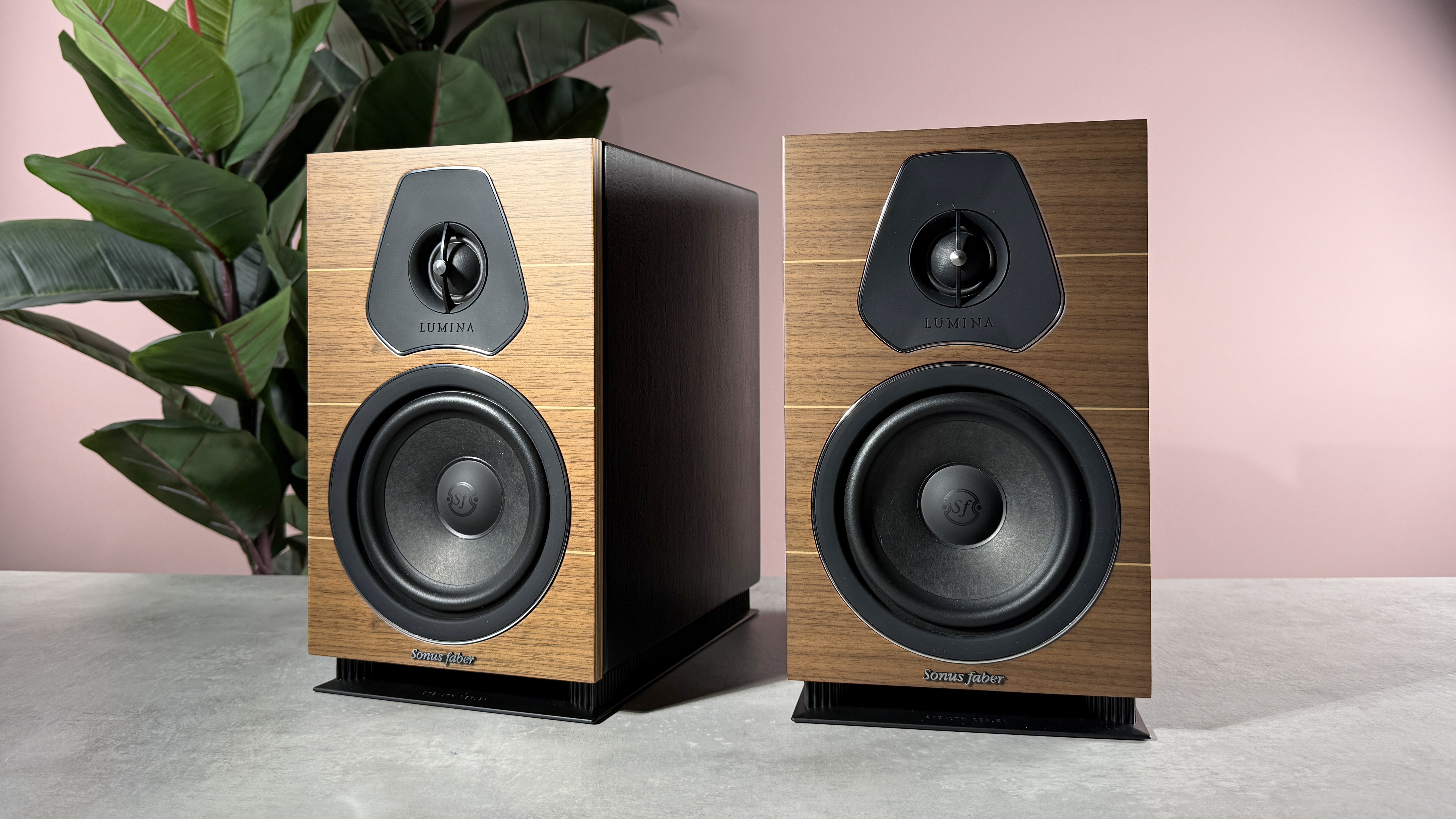
Specifications
Reasons to buy
Reasons to avoid
Sonus Faber has a rich legacy of crafting high-performance, high-end loudspeakers – and a reputation for premium price tags to match. Fortunately, the Lumina II offer a more accessible entry point into the brand’s world of luxurious sound, priced at $1,499 / £999 / AU$2,200 per pair.
As you’d expect from Sonus Faber, the build quality and finish are impeccable. Premium materials give these speakers a look that’s both understated and elegant, making them our top pick for design-conscious listeners. That said, they do feature real leather, which won’t be to everyone’s taste – that's both ethically and practically, as it can be sensitive to sunlight over time.
Thankfully, they sound as good as they look. In our review, we praised the Lumina II for delivering an open, naturalistic sound that’s “balanced, insightful, and nicely detailed.” The soundstage is well-organized, with impressive tonal accuracy and frequency response. They’re not the most powerful speakers we’ve tested – bass depth and overall volume fall slightly short of some rivals – but that’s a trade-off some will happily accept for this level of refinement.
If you’re drawn to style, quality, and a sophisticated listening experience, the Lumina II won’t disappoint. We called them “a visual and tactile treat”, and they absolutely are. Just be sure to explore a few alternatives at this price point, especially if you’re chasing a punchier, more bass-forward sound.
Read our full Sonus Faber Lumina II review
The best floorstander stereo speakers
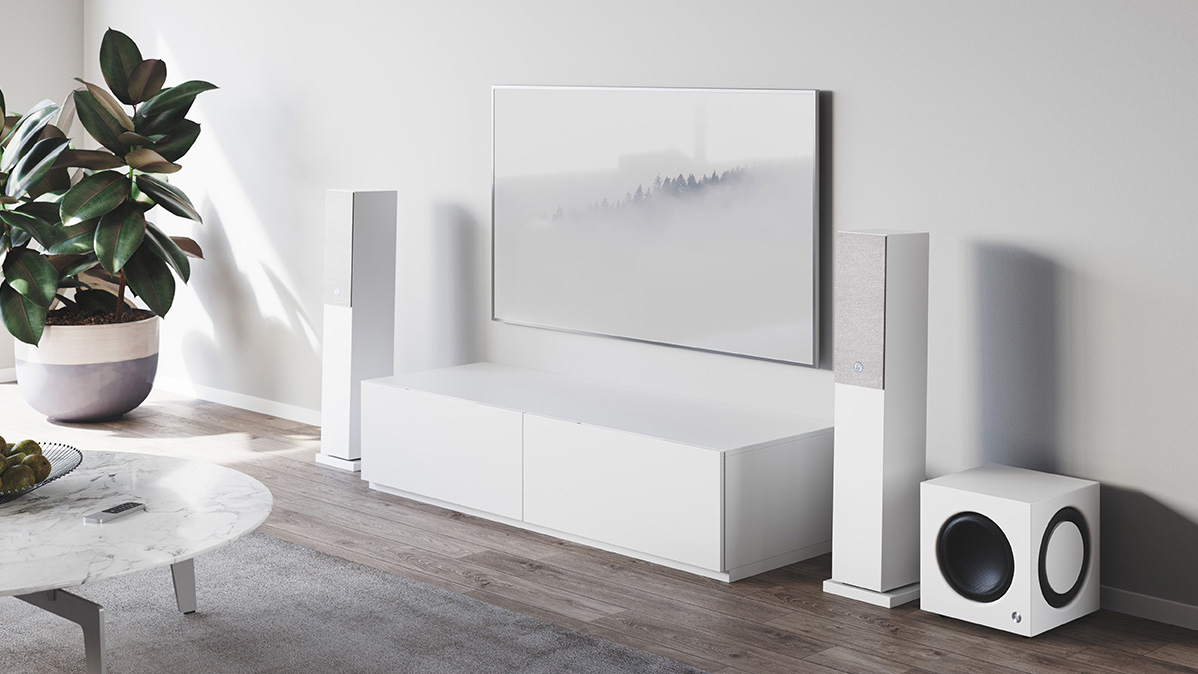
Specifications
Reasons to buy
Reasons to avoid
Smart and stylish, compact and manageable, ergonomically excellent and with as perky a sound as it’s possible to imagine, the Audio Pro A36 floorstanding stereo speakers may not be perfect, but they’ll be perfect for some.
There's wireless connectivity, as well as physical inputs that include HDMI ARC so you can easily involve your TV in the Audio Pro ecosystem.
During our testing, we loved the sound on offer from these speakers. In our review we wrote: "They reveal themselves to be straightforward and competent. Dynamic headroom is sufficient to allow the peaks and troughs of Metronomy’s Love Letters worthwhile expression while still picking up on the more subtle harmonic variations throughout the same song. "
However, these stereo speakers aren’t the last word in fidelity. They're constantly this close to getting carried away where the lower frequencies are concerned. But if it’s excitement and entertainment you crave along with a big serving of convenience, the Audio Pro A36 are a solid option that we enjoyed testing.
Read our full Audio Pro A36 review
Other stereo speakers to consider
Several other stereo speakers have been launched recently that might also be worth considering and haven't quite made it to our guide – at least not yet.
Audioengine A2+: As you'll see in our Audioengine A2+ review, we really did think that these are lovely and compact speakers while we were testing them. The reason they're not in this guide? They just won't quite deliver the oomph you're likely after in the bass/volume department.
Dali Epikore: First up, there's Dali's new Epikore additions: three new models, and they'll present plenty of Dali's impressive tech at a more affordable price tag compared to the amazing Epikore 11 4.5-way floorstander, which is already out in the range.
Focal Diva Utopia: We've also published our Focal Diva Utopia review. This is an excellent wireless stereo system, but we're still working out if we can feasibly put them in any TechRadar buying guide, given their huge $39k asking fee!
KEF MAT: We're also looking forward to testing KEF's new speakers with something the company calls 'MAT' in an eight-strong range that promises incredibly life-like and high-fidelity listening.
Best stereo speakers FAQ
How we test the best stereo speakers
In testing these hi-fi speakers, we compared each stereo set at a comparable power level and tested the same tunes, plucked from a variety of music genres.
Our test songs spanned the dynamic range of music and artists, from John Mayer to Tom Petty, and from U.K. prog-metal band TesseracT to the likes of John Williams and Hans Zimmer. Each song was chosen to test the dynamics offered by each set of speakers with some speakers reacting better to certain genre’s than others, depending on their design.
Of course, not all speakers are created equal in function. The Q Acoustics M40 HD towers, for example, are obviously made to cover a more broad frequency range than say the Edifier bookshelf speakers with a 4-inch woofer. We used our best judgement in testing these speakers according to their individual purpose and affordability, and graded them with that in mind.
Since comparing bookshelf speakers to high performance towers is an obvious case of apples and oranges, we try to make it clear which speaker is an apple and which is an orange.
Which speaker type is best for you?
There are lots of speaker styles to choose from – that's why we've put together lots of guides on the best speakers you can buy.
If you need a speaker you can take everywhere, make sure you look at the best waterproof speakers and best Bluetooth speakers. Or, if you want to fill your entire home with sound, check out the best wireless speakers and the best Sonos speakers for high-end sound performance.
Want to boost your TV's audio? Check out the best soundbars and best Dolby Atmos speakers.
For total control of your smart home, invest in one of the best smart speakers, which come with Google Assistant, Amazon Alexa, or Siri built-in.
If you have an iPhone or an iPad, you might also want to consider one of the best AirPlay speakers. These allow you to stream music from your Apple devices directly to your speaker. That means no complex entertainment set-up necessary.
What are stereo speakers?
Stereo speakers play sound from two distinct audio channels: a left channel, and a right one. That enables you to hear instruments as if they're coming from different places, so for example a guitar might sound like it's coming from the far left of the room while a vocal sounds like it's in the middle.
The difference between stereo speakers and mono ones, where every speaker gets the same audio, is dramatic. It makes music in particular sound much bigger and more detailed, and if you're watching a TV programme the sound is more realistic because it appears to be coming from both sides of the room.
What are the advantages of stereo speakers?
Almost all music is recorded with stereo playback in mind, and has been for many decades now: The Beatles' first stereo album, Abbey Road, was released in 1969 and stereo became the standard for most music in the 1970s and beyond.
The 1970s also saw movies move to stereo, primarily with Dolby Stereo in the mid-70s, and that became the default until the dawn of surround sound – but even today's multi-channel surround movies are also designed to be listened to in stereo if you don't have a full-on surround system.
The biggest single advantage of stereo, then, is that you're hearing music as the artists intended it to be heard. What they listened to in the studio was mixed and played back in stereo, mastered in stereo and then produced in stereo formats. As a result, listening on a single speaker, or on a multi-speaker system where every speaker plays the same thing, means you don't get the full experience.
The best way to describe stereo is that it's bigger. Instead of having everything come from a single place, stereo creates a sound field or sound stage where different things – musical instruments, effects, dialogue – can appear to be coming from different places. So gunshots may shoot from left to right, or AC/DC's Malcolm Young is to your left while Angus Young solos towards your right, or the rap may be dead centre while all kinds of sonic sculpting is going on either side of them.
Because you don't have everything stuffed into the same sonic space stereo gives music and other audio more room to breathe, and the result is a much clearer, more vivid, more lifelike sound.
Can a single speaker be stereo?
Yes, you can. In fact, some single speakers can deliver 360-degree audio. That's because inside the case there are multiple speaker drivers, which are the vibrating domes you probably think of when you hear the word "speaker". If a speaker has more than one set of drivers inside it, it can be configured so that one driver plays sound from the left audio channel and another plays the sound from the right audio channel.
The problem with that is that the drivers are still very close together, and that means you don't get the impression of room-filling sound that you get from standard stereo speaker pairs.
There are some quite clever ways to get around this – some phones and tablets use clever audio processing to make their audio sound much wider than you'd expect from such small devices – but ultimately there's only so much you can do when your speaker drivers are right next to each other. We much prefer the sound of dedicated, separate stereo speakers and we're sure you will too.
Can you use stereo speakers with a TV?
Yes, and we'd heartily recommend it: having a good quality pair of stereo speakers with your TV in the middle can make pretty much anything you watch feel more immersive. Whether it's the double bass of the Narcos title music or the horrible sounds of the clickers in The Last of Us, stereo speakers give you a much wider sound field and a more engaging (or frightening) audio experience than most TVs can deliver.
In the vast majority of cases you'll need to connect your TV to an AV receiver unless your speakers are wireless, and that connection is usually done via an optical cable or more commonly, an HDMI cable to the ARC (Audio Return Channel) or eARC (enhanced Audio Return Channel). ARC/eARC means that everything on your TV is passed to your speakers, including streaming TV apps, games on your console, and content from set-top boxes or streaming sticks.
An additional benefit to going down the AV receiver route is that you can add more speakers later to make your audio even better. We did that with our setup: what started as a simple but great-sounding stereo system is now a less simple but even greater-sounding system with a subwoofer, two rear surround speakers and two upwards-firing Dolby Atmos speakers.
What is the difference between passive and active stereo speakers?
The difference between passive and active stereo speakers is in their power and amplification setup. Passive speakers need an external amplifier or receiver to power them. This setup gives you lots of flexibility in choosing the right amplifier for you, often resulting in better sound quality due to higher-end external amps.
In contrast, active speakers have built-in amplifiers. They can be connected to a power source, and then you can connect an audio source directly (or wirelessly). This all-in-one design makes them more convenient and easier to set up, especially for beginners or anyone with limited space. However, because everything you need is built-in, upgrading or changing components is more challenging (or impossible) compared to passive speakers.
What are the differences between floorstanding and standmount stereo speakers?
Floorstanding and standmount speakers (often called a bookshelf speaker) differ in size, design, and performance. Floorstanding speakers are tall and, as you’d expect, they sit directly on the floor. They typically have multiple drivers inside them, including woofers, midrange, and tweeters, all in a single cabinet. This allows them to produce a full range of sound and makes them ideal for larger rooms or home theater setups. If you want highly powerful, immersive audio, floorstanding speakers are the best option.
Standmount speakers, as the name suggests, are smaller and designed to be placed on stands or shelves. They usually have fewer drivers, and typically this will be a woofer and a tweeter. This means their bass input can be limited – at least compared to floorstanding models. But they can deliver excellent sound quality, especially in smaller spaces. Their compact size also makes them easier to position.
Do wired stereo speakers offer better sound quality than wireless?
Wired stereo speakers tend to offer better sound quality than wireless ones. This is due to the direct connection between the speaker and the audio source. This direct connection minimizes any potential signal interference and loss, ensuring you get a clean and uninterrupted audio signal. Audiophiles often prefer wired speakers for this reason, because they bring you sound performance that tends to be the most reliable and consistent.
In comparison, wireless speakers use Bluetooth or Wi-Fi to connect to audio sources. These days, wireless technology is great and it offers convenience, as well as eliminating the need for cables. But it can still suffer from occasional interference or compression, which would affect sound performance. Then again, most newer, high-end wireless speakers have advanced tech that can address these issues, providing an experience that rivals many wired setups.
Latest updates to the best stereo speakers
March 28, 2025
Refreshed the introduction to add more details about our testing process and expertise. Switched the Sonus Faber Lumina I for the Sonus Faber Lumina II in as our 'best for a stylish home' pick. Removed the Apple HomePod mini. Added the Creative Pebble Nova as our 'best desktop' option. Added the lovely Audioengine A2+ to our 'also consider' section.
January 30, 2025
Refreshed the introduction. Replaced the older KEF LSX II entry with the recently reviewed KEF LSX II LT as our best premium wireless pick. Removed several older entries. Added the Kanto Ren based on our recent testing.
December 3, 2024
Switched the Definitive Technology BP9080x for the Dali Rubikore 2 as our best all-around speakers pick based on our recent testing. Also added the Q Acoustics 3020c in place of the Klipsch RP-150M.
October 3, 2024
Rewrote the introduction. Added an 'also consider' section to give readers more options in case they want to know what else to check out or which similar products have been launched and reviewed recently.
August 5, 2024
Checked all products against the latest reviews. Added more information to our FAQ section.
June 6, 2024
Added an author biog block plus an 'Also consider' section and this update log! Removed two products that, although very good indeed, are now being superseded by next-gen models. Refreshed copy throughout.
March 4, 2024
Added the Q-Acoustics' M40 HD in at the top spot – an excellent set of floorstanders with onboard amplification, offering the convenience of streaming in a wireless design.
Get daily insight, inspiration and deals in your inbox
Sign up for breaking news, reviews, opinion, top tech deals, and more.

Becky became Audio Editor at TechRadar in 2024, but joined the team in 2022 as Senior Staff Writer, focusing on all things hi-fi. Before this, she spent three years at What Hi-Fi? testing and reviewing everything from wallet-friendly wireless earbuds to huge high-end sound systems. Prior to gaining her MA in Journalism in 2018, Becky freelanced as an arts critic alongside a 22-year career as a professional dancer and aerialist – any love of dance starts with a love of music. Becky has previously contributed to Stuff, FourFourTwo and The Stage. When not writing, she can still be found throwing shapes in a dance studio, these days with varying degrees of success.
- Al GriffinSenior Editor Home Entertainment, US
- Simon Lucas